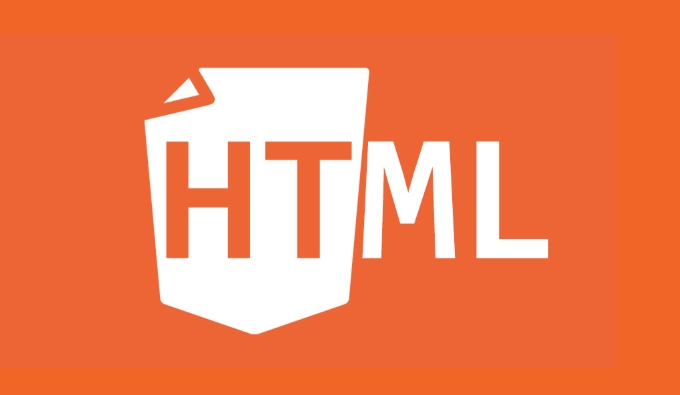Customizing H5 Video Player Controls and UX
Jul 16, 2025 am 03:02 AMThe H5 video player's control bar and user experience can improve flexibility and brand consistency through custom design. 1. The custom control bar needs to hide native controls, and use HTML CSS to build a UI, combining JavaScript to realize playback, pause, volume, progress and other functions. The basic components include playback/pause buttons, progress bars, time display, volume control and full-screen switching buttons. 2. The key points of improving interactive experience include optimizing the progress bar drag and click jump logic, using localStorage to save the volume state, and adapting to the full-screen mode style. 3. Mobile optimization should be muted by default and provide an unmute button, ensure that the operating area is large enough, design advanced interaction reasonably, avoid overlaying too much floating layer, and prevent iOS Safari from forcing full screen by adding the webkit-playsinline attribute. 4. The player needs to unify the brand style such as color and font, and optimize the loading experience such as adding loading animations and preloading mechanisms.

The control bar and user experience of the H5 video player can actually be very flexible. The key is how to adjust it according to the scene. Although the default browser controls are simple and available, they are often not enough, especially when you want to improve user interaction or maintain a consistent brand style.

1. Basic structure of custom control bars
The core idea of custom control bar is to hide native controls ( controls=false ), then use HTML CSS to build a UI, and then control playback, pause, volume, progress and other functions through JavaScript.
Basic components usually include:

- Play/Pause Button
- Progress bar (with drag function)
- Current time and total time display
- Volume control
- Full screen switch button
You can put these elements in a container, set the layout style, and bind the event listener. For example, click the play button and call video.play() or video.pause() .
2. Key points to improve the player interactive experience
Having buttons alone is not enough, you have to make the operation easy. Here are a few practical tips:

- Progress bar drag experience : add a drag handle to the progress bar, and update the time in real time during the dragging process, and jump to the corresponding position after release. It can be implemented using an element with
inputtype range, or write logic yourself. - Click on the progress bar to jump : In addition to dragging, users may also directly click on a certain place in the progress bar. At this time, they need to calculate the video time corresponding to the click position and then jump over.
- Volume memory function : The user turns the volume down and turns on the video again, it is best to keep the last status. You can use localStorage to save the current volume value.
- Full screen status adaptation style : After entering full screen mode, some styles may not be suitable, and dynamic adjustments can be made through
fullscreenchangeevent.
After these details are processed, users will feel that the player "understands me".
3. Mobile compatibility and operation optimization
Mobile browsers have many restrictions on videos, especially in terms of automatic playback, mute strategies, etc. Therefore, when designing UX, you should pay attention to the following points:
- Mute is enabled by default, and an unmute button is provided to avoid being intercepted by the browser to automatically play.
- Do not make the control bar too small, and the finger operation area should be large enough
- Consider whether you need to double-click to play/pause, slide to adjust brightness or volume, etc.
- Try to avoid overlaying too many floating layers on the video, which will affect click response or cause incorrect touch
Another common problem is that the video tag on iOS Safari will play in full screen by default. If you don't want this, you can add webkit-playsinline playsinline attribute to the tag.
4. Unified brand style and optimization of loading experience
Although the player is a functional component, it cannot be separated from the overall page style. For example, button color, font size, rounded curvature can be customized to the theme color of your website.
In addition, the loading experience is also easily overlooked. You can add a loading animation when the video is loaded, and then display the control bar after the load is completed; you can also preload some video content so that users can play it by clicking.
Basically that's it. A well-made H5 video player is not created by stacking complex functions, but polishes the basic experience and then flexibly expands according to specific needs.
The above is the detailed content of Customizing H5 Video Player Controls and UX. For more information, please follow other related articles on the PHP Chinese website!

Hot AI Tools

Undress AI Tool
Undress images for free

Undresser.AI Undress
AI-powered app for creating realistic nude photos

AI Clothes Remover
Online AI tool for removing clothes from photos.

Clothoff.io
AI clothes remover

Video Face Swap
Swap faces in any video effortlessly with our completely free AI face swap tool!

Hot Article

Hot Tools

Notepad++7.3.1
Easy-to-use and free code editor

SublimeText3 Chinese version
Chinese version, very easy to use

Zend Studio 13.0.1
Powerful PHP integrated development environment

Dreamweaver CS6
Visual web development tools

SublimeText3 Mac version
God-level code editing software (SublimeText3)

Hot Topics
 Audio and Video: HTML5 VS Youtube Embedding
Jun 19, 2025 am 12:51 AM
Audio and Video: HTML5 VS Youtube Embedding
Jun 19, 2025 am 12:51 AM
HTML5isbetterforcontrolandcustomization,whileYouTubeisbetterforeaseandperformance.1)HTML5allowsfortailoreduserexperiencesbutrequiresmanagingcodecsandcompatibility.2)YouTubeofferssimpleembeddingwithoptimizedperformancebutlimitscontroloverappearanceand
 Adding drag and drop functionality using the HTML5 Drag and Drop API.
Jul 05, 2025 am 02:43 AM
Adding drag and drop functionality using the HTML5 Drag and Drop API.
Jul 05, 2025 am 02:43 AM
The way to add drag and drop functionality to a web page is to use HTML5's DragandDrop API, which is natively supported without additional libraries. The specific steps are as follows: 1. Set the element draggable="true" to enable drag; 2. Listen to dragstart, dragover, drop and dragend events; 3. Set data in dragstart, block default behavior in dragover, and handle logic in drop. In addition, element movement can be achieved through appendChild and file upload can be achieved through e.dataTransfer.files. Note: preventDefault must be called
 What is the purpose of the input type='range'?
Jun 23, 2025 am 12:17 AM
What is the purpose of the input type='range'?
Jun 23, 2025 am 12:17 AM
inputtype="range" is used to create a slider control, allowing the user to select a value from a predefined range. 1. It is mainly suitable for scenes where values ??need to be selected intuitively, such as adjusting volume, brightness or scoring systems; 2. The basic structure includes min, max and step attributes, which set the minimum value, maximum value and step size respectively; 3. This value can be obtained and used in real time through JavaScript to improve the interactive experience; 4. It is recommended to display the current value and pay attention to accessibility and browser compatibility issues when using it.
 How can you animate an SVG with CSS?
Jun 30, 2025 am 02:06 AM
How can you animate an SVG with CSS?
Jun 30, 2025 am 02:06 AM
AnimatingSVGwithCSSispossibleusingkeyframesforbasicanimationsandtransitionsforinteractiveeffects.1.Use@keyframestodefineanimationstagesforpropertieslikescale,opacity,andcolor.2.ApplytheanimationtoSVGelementssuchas,,orviaCSSclasses.3.Forhoverorstate-b
 HTML audio and video: Examples
Jun 19, 2025 am 12:54 AM
HTML audio and video: Examples
Jun 19, 2025 am 12:54 AM
Audio and video elements in HTML can improve the dynamics and user experience of web pages. 1. Embed audio files using elements and realize automatic and loop playback of background music through autoplay and loop properties. 2. Use elements to embed video files, set width and height and controls properties, and provide multiple formats to ensure browser compatibility.
 What is WebRTC and what are its main use cases?
Jun 24, 2025 am 12:47 AM
What is WebRTC and what are its main use cases?
Jun 24, 2025 am 12:47 AM
WebRTC is a free, open source technology that supports real-time communication between browsers and devices. It realizes audio and video capture, encoding and point-to-point transmission through built-in API, without plug-ins. Its working principle includes: 1. The browser captures audio and video input; 2. The data is encoded and transmitted directly to another browser through a security protocol; 3. The signaling server assists in the initial connection but does not participate in media transmission; 4. The connection is established to achieve low-latency direct communication. The main application scenarios are: 1. Video conferencing (such as GoogleMeet, Jitsi); 2. Customer service voice/video chat; 3. Online games and collaborative applications; 4. IoT and real-time monitoring. Its advantages are cross-platform compatibility, no download required, default encryption and low latency, suitable for point-to-point communication
 How to create animations on a canvas using requestAnimationFrame()?
Jun 22, 2025 am 12:52 AM
How to create animations on a canvas using requestAnimationFrame()?
Jun 22, 2025 am 12:52 AM
The key to using requestAnimationFrame() to achieve smooth animation on HTMLCanvas is to understand its operating mechanism and cooperate with Canvas' drawing process. 1. requestAnimationFrame() is an API designed for animation by the browser. It can be synchronized with the screen refresh rate, avoid lag or tear, and is more efficient than setTimeout or setInterval; 2. The animation infrastructure includes preparing canvas elements, obtaining context, and defining the main loop function animate(), where the canvas is cleared and the next frame is requested for continuous redrawing; 3. To achieve dynamic effects, state variables, such as the coordinates of small balls, are updated in each frame, thereby forming
 How to check if a browser can play a specific video format?
Jun 28, 2025 am 02:06 AM
How to check if a browser can play a specific video format?
Jun 28, 2025 am 02:06 AM
To confirm whether the browser can play a specific video format, you can follow the following steps: 1. Check the browser's official documents or CanIuse website to understand the supported formats, such as Chrome supports MP4, WebM, etc., Safari mainly supports MP4; 2. Use HTML5 tag local test to load the video file to see if it can play normally; 3. Upload files with online tools such as VideoJSTechInsights or BrowserStackLive for cross-platform detection. When testing, you need to pay attention to the impact of the encoded version, and you cannot rely solely on the file suffix name to judge compatibility.






